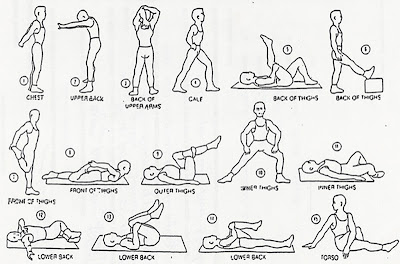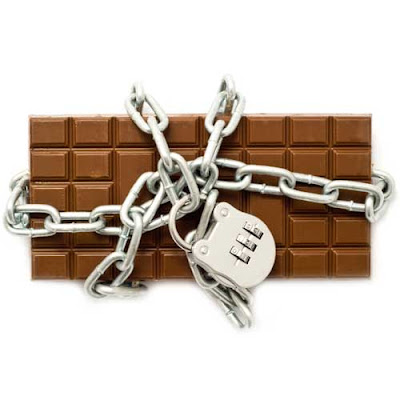1. "Lower! Lower! Lower!"
When it happens: Squats.
Why it's bad: By not going down far enough in a squat, you miss out on engaging all the muscles in your legs, butt, and core. And the fewer muscles you work, the fewer calories you burn. At the lowest point of your squat, your thighs should be parallel to the ground.
How to fix it: Stand in front of a chair or bench and do a few practice squats, pushing your hips back and lowering down until you’re almost sitting. This will help you learn what proper squat form feels like. Focus on keeping your weight in your heels and your chest up (you should be able to read any text on your shirt in the mirror). With proper form, you’ll work the right muscles and shape lean legs and a tight butt faster.
Why it’s bad: Crunches require your spine to go into flexion, which places unnecessary stress on the back. They also don’t engage the transverse abdominus (your deepest core muscles), which are key for a flat stomach.
How to fix it: Do planks instead! Any variation of plank strengthens all the muscles in the core, legs, and arms and improves posture.
Why it's bad: By not going down far enough in a squat, you miss out on engaging all the muscles in your legs, butt, and core. And the fewer muscles you work, the fewer calories you burn. At the lowest point of your squat, your thighs should be parallel to the ground.
How to fix it: Stand in front of a chair or bench and do a few practice squats, pushing your hips back and lowering down until you’re almost sitting. This will help you learn what proper squat form feels like. Focus on keeping your weight in your heels and your chest up (you should be able to read any text on your shirt in the mirror). With proper form, you’ll work the right muscles and shape lean legs and a tight butt faster.
2. "You Can Do So Much Better!"
When it happens: Crunches.Why it’s bad: Crunches require your spine to go into flexion, which places unnecessary stress on the back. They also don’t engage the transverse abdominus (your deepest core muscles), which are key for a flat stomach.
How to fix it: Do planks instead! Any variation of plank strengthens all the muscles in the core, legs, and arms and improves posture.
3. "Don't Round Your Back!"
When it happens: Deadlifts.
Why it’s bad: Many women have a tendency to round their back as they hinge forward during deadlifts, but this places a serious amount of stress on the back, especially when holding dumbbells. You should feel this move primarily in your hamstrings and glutes.
How to fix it: Make sure to keep your core engaged the entire time, shift your hips back, and keep your chest lifted as you lower your torso. Keep glutes engaged and a slight bend in your legs. Only lower down until you feel a slight stretch in your hamstrings, and then use your glutes, not your back, to return to standing.\
Why it’s bad: Lifting heavy weights will not make you bulky! If you don’t strength train with enough resistance to completely fatigue your muscles, you won’t add fat-frying muscle mass to your frame.
How to fix it: Choose a weight that’s heavy enough to allow you complete one set and nothing more. In addition to strength moves, add cardio intervals (30 seconds of jumping rope, sprints, etc.) into your routine. This combination will build lean muscle, burn fat, and keep your metabolism elevated for hours after you leave the gym.
Why it’s bad: Many women have a tendency to round their back as they hinge forward during deadlifts, but this places a serious amount of stress on the back, especially when holding dumbbells. You should feel this move primarily in your hamstrings and glutes.
How to fix it: Make sure to keep your core engaged the entire time, shift your hips back, and keep your chest lifted as you lower your torso. Keep glutes engaged and a slight bend in your legs. Only lower down until you feel a slight stretch in your hamstrings, and then use your glutes, not your back, to return to standing.\
4. "Add Some Weight!"
When it happens: Strength training. Why it’s bad: Lifting heavy weights will not make you bulky! If you don’t strength train with enough resistance to completely fatigue your muscles, you won’t add fat-frying muscle mass to your frame.
How to fix it: Choose a weight that’s heavy enough to allow you complete one set and nothing more. In addition to strength moves, add cardio intervals (30 seconds of jumping rope, sprints, etc.) into your routine. This combination will build lean muscle, burn fat, and keep your metabolism elevated for hours after you leave the gym.
5. "Keep Your Chest Up!"
When it happens: Squats, deadlifts, lunges, or medicine-ball throws.
Why it’s bad: Letting your chest collapse when performing these moves, can strain the lower back as well as place stress on the neck and shoulders.
How to fix it: Be conscious. Constantly think about keeping the chest lifted and drawing the shoulder blades down and back during all of these exercises.
Why it’s bad: Letting your chest collapse when performing these moves, can strain the lower back as well as place stress on the neck and shoulders.
How to fix it: Be conscious. Constantly think about keeping the chest lifted and drawing the shoulder blades down and back during all of these exercises.
6. "Put Your Phone Away!"
When it happens: All the time.
Why it’s bad: Stopping your workout to look at your phone slows down your heart rate and calorie burn. If you use your phone while on the treadmill, you’re also missing the mental benefits of working out; it’s the perfect time to clear your mind and reset.
How to fix it: Leave your phone in the car or locker room. The best way to take a tech break and focus on your mind and body is to keep the phone stored in a place where you can’t look at it.
Why it’s bad: If you’re trying to lose weight, it may seem like a good idea to skip a meal after your workout. This could not be further from the truth. After your workout, your body needs to start restoring and repairing itself from your training session. In other words, it needs calories. Your body will automatically use the calories you eat for good (repair and recovery) and not bad (fat storage).
How to fix it: Directly following your workout, your best bet is a liquid meal that contains protein and carbohydrates. These drinks don't require a lot of digestion, so the nutrients will get into your system fast, allowing for your body to jump-start the recovery process. Forty-five minutes to one hour after your workout, eat a whole food meal, again containing protein and carbohydrates. For example, a piece of fish with quinoa and a green salad with olive oil would be a great meal to have at this time.
Why it’s bad: Stopping your workout to look at your phone slows down your heart rate and calorie burn. If you use your phone while on the treadmill, you’re also missing the mental benefits of working out; it’s the perfect time to clear your mind and reset.
How to fix it: Leave your phone in the car or locker room. The best way to take a tech break and focus on your mind and body is to keep the phone stored in a place where you can’t look at it.
7. "Eat Something!"
When it happens: After your workout.Why it’s bad: If you’re trying to lose weight, it may seem like a good idea to skip a meal after your workout. This could not be further from the truth. After your workout, your body needs to start restoring and repairing itself from your training session. In other words, it needs calories. Your body will automatically use the calories you eat for good (repair and recovery) and not bad (fat storage).
How to fix it: Directly following your workout, your best bet is a liquid meal that contains protein and carbohydrates. These drinks don't require a lot of digestion, so the nutrients will get into your system fast, allowing for your body to jump-start the recovery process. Forty-five minutes to one hour after your workout, eat a whole food meal, again containing protein and carbohydrates. For example, a piece of fish with quinoa and a green salad with olive oil would be a great meal to have at this time.



































